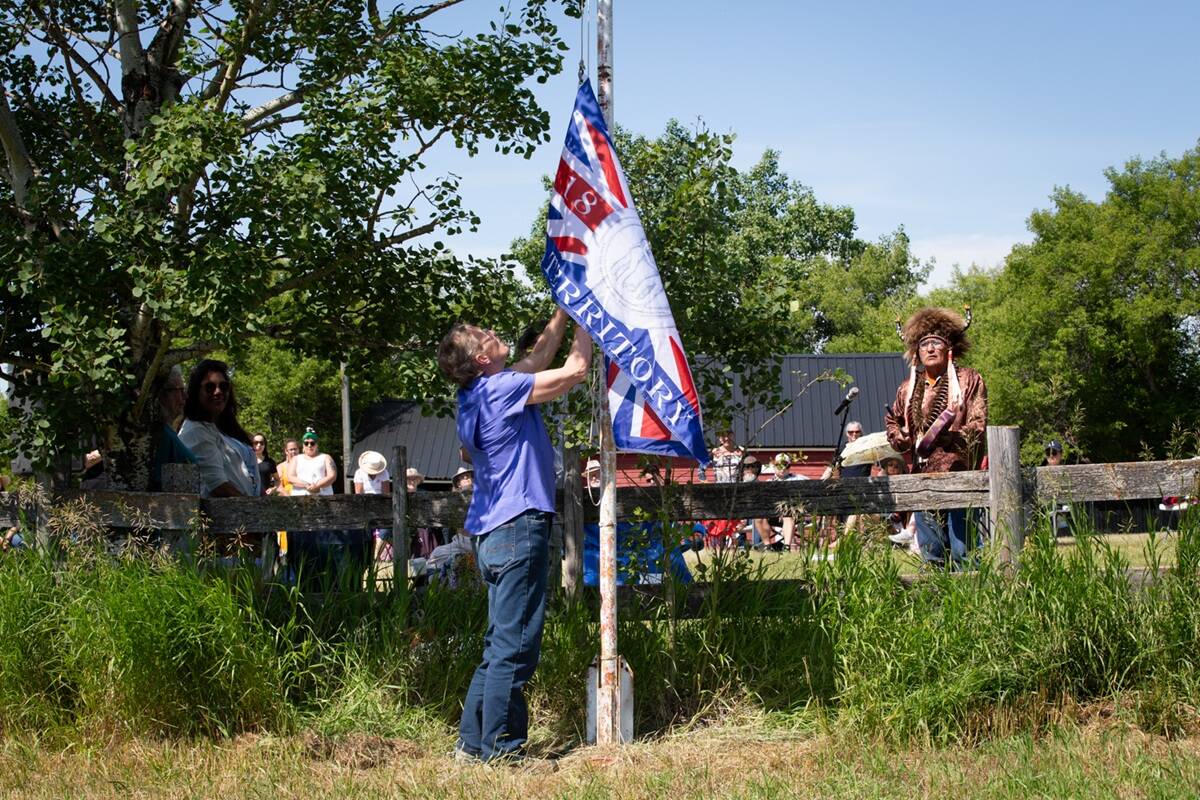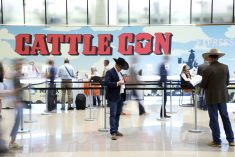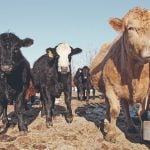Early in the morning, just as the sun peeks over the horizon, Nathan Phinney is already working on his farm near Moncton, New Brunswick.
He spends his morning working cattle, his preferred job on the farm. Through and through, Phinney is a cattleman.
“I’ve been farming since I was able to walk,” he says.
Read Also

Treaty Land Sharing Network expands reach in Saskatchewan and Alberta
The Treaty Land Sharing Network, which connects land holders with First Nations and Metis people, has expanded since it began in 2018
But these days, Phinney must be up early to get his work done, since he became the Canadian Cattle Association (CCA) president after Reg Schellenberg passed away in December. Phinney, the vice-president at the time, stepped into the role and became the first CCA president from east of Ontario.
Ranching
Phinney grew up knowing he wanted to work on the ranch, but his family also influenced other aspects of his future career. His grandfather was on the CCA board, so Phinney grew up watching him fight for their industry.
It was only a matter of time before he got involved, as well.
“As I kind of progressed, we see that the direction that maybe things were going, weren’t exactly what we had in mind,” Phinney says. “So, we could sit back and complain and not do anything or try to be leaders in the industry and be involved.”
Phinney also chaired the Maritime Beef Council for almost eight years, then spent some time at the Beef Cattle Research Council before making his way to the CCA.
“I moved over to CCA and tried to bring our Atlantic perspective and do the best job I could do, looking at a national industry and what it was that we needed to try to accomplish to achieve our goals,” Phinney says.
Now, as president of the CCA, Phinney has other challenges that may affect the beef industry at the forefront of his mind.

East and West
When people think of agriculture in Canada, they often think of the sprawling Prairie, fading into the horizon. They think of herds of black, tan or red cattle, fields of yellow canola flowers swaying in the breeze and big green combines lined up in the autumn.
But Canada is large, and people farm it from coast to coast. Phinney, who often receives congratulations for being the first CCA president from east of Ontario, says there isn’t that much of a difference between farms in the East versus the West, aside from the climate.
“As far as running your operation day-to-day, they’re all fairly similar,” he says.
“Maybe a little more feeding intensity East, where a lot of our cattle are housed indoors just because of the amount of snow, versus out West where the majority of the cows stay out all year and are fed outside.”
If you’re an industry leader, Phinney says it doesn’t matter which part of the country you’re from. “You’re there because you want to make a difference and help the entire national industry and look at the scope of things.”
Goals
One area Phinney wants to focus on is access to business risk management tools. He explains that if the border closes or there’s a drastic change in the marketplace, there could be big issues. Better business risk management programs should be offered to producers to mitigate the effects of such events.
He also wants to focus on the industry’s growth — something he finds very important, as the national herd size has been shrinking since it peaked in 2005, and recent drought exacerbated the issue.
“We’ve missed some expansion phases on the cow side of things. We’re getting to a point where we do have some pretty good trade deals in place and some strong exports as well as a strong domestic market. But getting to a position where (we have) critical mass and being able to supply markets is starting to come up a little bit.”
Phinney says whatever part of the country you’re looking at, there’s room for growth.
“I know in Atlantic Canada, we have a huge opportunity with what we can grow for grass here and our growing season. So there’s a big opportunity in Eastern Canada, as well as Western Canada and Central Canada, but I think the overall growth of the industry is what I’m really hoping to focus on in the next year or two.”
However, the industry isn’t all doom and gloom. Phinney says there are a lot of opportunities to look forward to, such as young producers who are getting involved with the industry.
“I’m really noticing a lot of younger producers becoming engaged and even at our CCA board table,” he says.
He also thinks the environmental stewardship story being told about Canadian beef and Canadian ranchers is a positive for the industry.
“The opportunity for Canadian beef, especially with the story we have to tell on environmental stewardship, and the sustainability side, is like no other in the world.”
Personal life
With so much work to be done in his new role as president, Phinney has been travelling throughout Canada to connect with producers and attend events — something that will continue. As a producer from Eastern Canada, this means he spends a lot of time flying out of New Brunswick to places all across the country. That means less time than he would like with his wife Jill and their three kids.
“If it wasn’t for a strong partner, I wouldn’t be able to manage,” Phinney says. When Schellenberg passed away suddenly last year, Phinney and Jill had a big discussion about whether they were able to do this. Jill was very supportive, says Phinney, and he wouldn’t be able to fill the CCA president’s chair without her. Phinney says he’s grateful that Jill ensures their kids are supported at all their events, even when their dad is away.
“She ensures that they’re off to school and all their extracurricular activities are attended.”
Now, as president, Phinney is working to balance his family, his ranch and his work with the CCA.
“It’s hard to attend to all the events and it weighs on you sometimes when you’re missing the hockey game as a game-winning goal (is scored), or a soccer game, but it’s what we signed up to do. We’re here for industry, and we’re here for our kids. And we’re going to remember that that’s who we’re ultimately working on all this stuff for.”
Future
Phinney will keep up what he’s been doing already as president — connecting with producers, working for Canadian agriculture and trying to connect ranchers across the country.
“We are the Canadian beef industry and everybody has a part to play, so I want to continue that strength and really building it up so when we go to Ottawa, they see that we are unified from coast to coast and that’s really the national industry.”

















